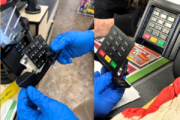Having a colonoscopy — a screening test to look for cancers of the colon and rectum — doesn’t make anyone’s top 10 list of favorite things to do. However, doctors who treat patients with colorectal cancer are extremely enthusiastic about the ability of colonoscopies to save lives.
“Colonscopies are so important,” says Dr. Mark Pochapin, professor and director of the division of gastroenterology at NYU Langone Medical Center. “They prevent the No. 2 cause of cancer deaths. The rates of deaths from colorectal cancer are dropping. We think screening is why.”
[See: 6 Options for People Who Don’t Want a Colonoscopy.]
Preparing for Your Colonoscopy
Preparing for a colonoscopy is the worst part of the experience, Pochapin says. You must thoroughly clean your colon with a special formula so your gastroenterologist can look for polyps, which are benign growths that might eventually become cancerous.
“Bowel preps take a lot of different forms,” Pochapin says, “and doctors have preferences [about which prep to use]. It’s really important you get the bowel prep your doctor recommends, not something different.” You can obtain most bowel preps over the counter at the pharmacy.
Most doctors prescribe a split-dose bowel prep, says Dr. Sapna Syngal, director of research at the Center for Cancer Genetics and Prevention at Dana-Farber Cancer Institute. With a split dose, you take half the formula the night before and the other half the morning of the colonoscopy. The formula causes diarrhea, so you should drink plenty of water to stay well hydrated. Your doctor will also instruct you not to eat solid foods the day before your colonoscopy, to consume only clear liquids or soft foods, such as broth or Jell-O (nothing red!) and to stop eating after midnight or for about four to eight hours before the procedure.
The Day of the Colonoscopy
“By the time people come for the procedure, they’ve done their part,” Pochapin says. “Now it’s the doctor’s turn.”
When you arrive for your colonoscopy, a doctor or nurse will examine you and begin an IV. Most patients are sedated for the duration of their colonoscopy. Although there’s some variation among practices, Syngal says, most patients are under conscious sedation. “You may or may not remember the procedure,” she says. You’ll receive a combination of medications so you’re relaxed and don’t feel pain.
Once you’re sedated, your doctor will place you on your left side and examine your rectum. If you’re a man, the doctor will also palpate your prostate. Then she’ll insert a scope in your anus and into the colon.
“The scope has a light on the end, a hole — or channel — to put instruments through and a high-resolution video camera,” Pochapin says. Your doctor can manipulate the tip of the scope up and down and right to left as he or she slowly advances the scope through the entire length of the colon to the cecum, a pouch that connects the small intestine to the colon. At the same time, the doctor will inflate your colon with air, plus spray water on the colon walls to clean them. “It’s really remarkable,” Syngal says. “We are literally inside your body. It’s like a movie.”
Once your doctor reaches the cecum, he or she will slowly begin withdrawing the scope. “On the way back, we spend a lot of time looking for abnormalities,” Syngal says. “We’re looking for polyps, which are precancerous.”
A polyp can lay flat against the colon wall or protrude, looking a bit like a small mushroom. If you have a polyp, your doctor will close a snare, or lasso, over it and apply a small electrical current to cut and cauterize it. Then she’ll suck it into the hole in the scope to remove it from your body.
“Not all polyps will become cancer,” Pochapin says. “However, we remove them all since we don’t know [which ones might]. [By removing polyps] we can really prevent colorectal cancer.”
[See: 8 Questions to Ask Your Doctor About Colon Cancer.]
The polyps are sent to a lab where a pathologist determines if the polyp is precancerous (an adenoma) or non-precancerous. “If your colonoscopy is normal and you don’t have a family history [of colorectal cancer], you should come back [for screening] in 10 years,” Syngal says. If you have a precancerous polyp, your doctor will tell you how often to undergo screening in the future.
About 10 to 15 percent of colonoscopies detect adenomas, Syngal says. Most people who do have polyps usually only have one or two small polyps that are typically 2 to 7 millimeters in size. A polyp that is 10 millimeters or larger is considered to be high risk and more likely to develop into cancer. It’s unusual to find multiple polyps, Syngal says. An individual who has many polyps may have a hereditary predisposition to colorectal cancer and should talk to his or her doctor about genetic testing.
Colon cancer develops slowly over 10 to 15 years, so the goal of a colonoscopy is to find polyps and remove them before they develop into cancer. Occasionally, however, doctors do find cancer.
“Cancer is a lot uglier than a polyp,” Pochapin says. “It moves freely and bleeds. It’s embedded [in the colon wall] so we can’t remove it [during the colonoscopy].” If your doctor finds cancer, he or she will take a biopsy of the tumor and mark it so a surgeon can come back and remove it.
The risks associated with colonoscopies are quite rare, Syngal says. “The major risk is significant bleeding, especially if a big polyp is removed.” You can also have complications from the anesthesia or a perforation of the bowel wall. “Colonoscopies are safe for 99.9 percent of people,” she says.
[See: What to Eat, Drink and Do to Relieve Constipation.]
A typical colonoscopy takes about 20 to 40 minutes, Pochapin says. Once you wake up, you’ll rest briefly,and then you’re free to leave. Be sure to bring someone who can drive you home since it takes time to recover from sedation.
More from U.S. News
6 Options for People Who Don’t Want a Colonoscopy
8 Questions to Ask Your Doctor About Colon Cancer
What to Eat, Drink and Do to Relieve Constipation
What to Expect When You Have a Colonoscopy originally appeared on usnews.com







